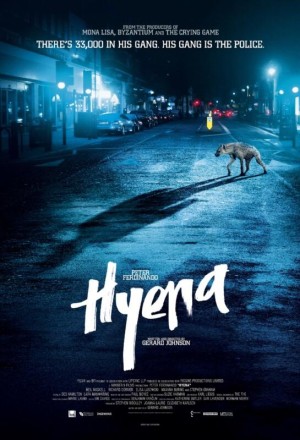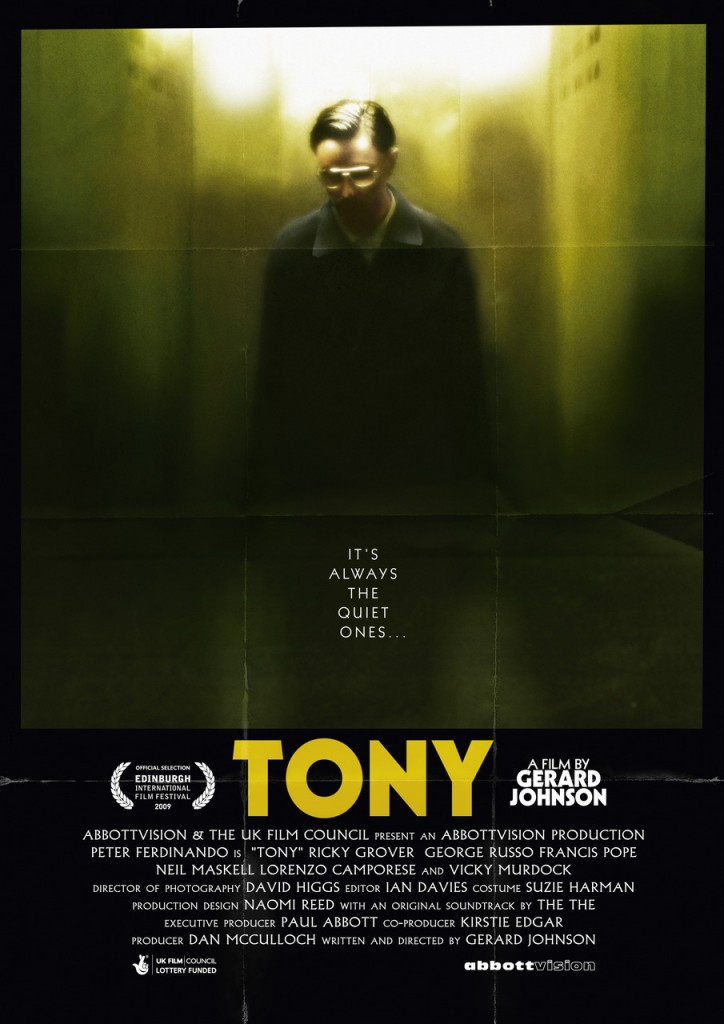You have no items in your cart. Want to get some nice things?
Go shopping
Following cult favourite Tony (2009), Gerard Johnson returns with his uncompromisingly bleak Hyena – a stylish, British Bad Lieutenant, set in West London. He talks to Litro about directorial control, marketing and the police.
Gerard Johnson: Did you get a chance to see the film?
LITRO: Yes, I did actually – I watched it last night.
GJ: Great. Did you have headphones?
LITRO: No, I watched it on a laptop actually. Probably not the way it was intended to be watched. I was going to ask you about that as well. VOD – it’s partly how you released Tony (Gerard Johnson’s first feature), isn’t it?
GJ: Yeah. Well, that was cinemas then a few days later. Annoying if you ask me. I like films to be at the cinema. It takes the edge off if you know that they’re going on VOD. I think things have changed a little bit from a few years ago, five years ago now. But, at the time, I was annoyed about it. I just thought – I wanted it to be just a cinema release and then come out on DVD and VOD a few months later. I think it depreciates the film – when you’ve spent five years of your life making a film and find out it’s coming out on DVD really seems to make it a kick in the teeth. Obviously it was my first film so I wasn’t in the position to argue too much, because it was getting a cinema release. With your first film you learn a lot of stuff, how not to do things the next time round. In terms of everything really.
The poster of Tony – I don’t know if you saw that.
LITRO: I like that poster.
GJ: Which one?
LITRO: Tony’s standing in the middle.
GJ: See, that wasn’t my poster. That was Revolver’s poster. Mine was a very simple one. When he’s in a lift and he’s looking down – and it was called Tony, originally. It was their idea to call it Tony: London Serial Killer, which was very subtle, and to have a guy standing holding a hammer covered in blood, which was also very subtle. So, to be honest, if I’d have seen that film in a video shop, I’d have never picked it up and got it. It ostracised it more to people that would have seen it, and opened it more to the horror crowd. I love horror films, don’t get me wrong, but I never intended it to be a ‘horror film’. It’s things like that and you learn, and you think [Revolver] would have been happy because they probably sold more DVDs but it went to the wrong people. And people would say: this isn’t horror – there’s hardly any blood in it. Where’s all the guts, where’re all the murders?
LITRO: People are rediscovering it that way on Netflix, for example. What do you think to that?
GJ: I’ve got Netflix and Amazon Prime, and I think they’re great.
LITRO: You don’t mind that they’re seeing it on small screens, and not in cinemas?
GJ: I’m all for it being out there, but what I’ve got a problem with is films that get released on DVD and VOD at the same time, on all platforms. Netflix and iTunes and Amazon Prime – eventually, because DVDs are on the way out, that’s the way people will be watching films in the future. I much prefer things like Netflix to illegal streaming and torrents, and people getting the film for free.
LITRO: A Field in England, which Peter Ferdinando [star of Hyena] also appeared in, was released that way.
GJ: Yeah, that was a very specific choice, and a shrewd one, because they put it on Film4, which gets a hell of a lot more viewers than had it gone the traditional route. And it had a lot of publicity and it worked for that, but it’s funny how they haven’t done it since. I don’t know whether it will be a model that they keep doing because I’m sure they would have done it again by now. I think it was very successful for A Field in England – it was perfect. Again, I was at the Ritzy at the opening night, and Ben and everyone did a Q&A and I was really pleased to see it at the Ritzy and not on TV. If they miss their platform and they’re not in the cinema too long, then by any means watch them by any other means.
LITRO: How did you start into filmmaking?
GJ: There were more shorts than the two that are out there. Completely self-trained, really. Just grew up surrounded by films and film culture from a very early age. I ran on commercials and music videos for a time, learned what I needed to learn on that side of it, then went to work in the editing world. I learned how to edit and make my own films in an editing facility. And just completely did it off my own back. I was very driven to make features.
LITRO: Just after making Tony you said the next film you were making was going to be an English version of Bad Lieutenant – do you think it came out that way?
GJ: I think it’s more Lieutenant than ‘bad Lieutenant’, because they’re all bad.
LITRO: Maybe not all quite as bad as they are in this film.
GJ: I don’t know. They’re all tainted by corruption in one shape or form.
LITRO: Is that the angle you were taking with this – is that a message?
GJ: The film came about from four years of research. In fact, longer than four years, if you take the inspiration for Hyena which is somebody that me and Peter knew over 10 years ago. So it’s been a long time in the making and obviously the amount of research you do dictates how the script turns out.
LITRO: What kind of research did you do, and was it all shot in Queensway?
GJ: It was all shot in West London and Queensway. I was living there at the time and I used to spend a lot of time in Queensway and around that area. I thought, not since Performance, has there been a film shot in West London that captures what West London’s all about. I think we’ve got the Notting Hills and everything else – that’s not the West London that I know. I think it’s an incredibly photogenic part of London that’s underused. When everyone else goes to East London now, it’s become like ‘edgy’. But I find West London is very interesting – there are lots of secret societies and things going on.
LITRO: Such as?
GJ: If I told you, they wouldn’t be secret…[Laughs]
LITRO: Give us a flavour.
GJ: Around that area there are lots of little secret clubs and it’s just really fascinating. For instance, Queensway has the highest concentration of transexuals outside of Brazil. Now, not many people are aware of that, but you only need to spend a bit of time around there. Did you know that?
LITRO: No, I did not, no.
GJ: [Laughs] When you’re a filmmaker, you’re allowed to do research on things that are a little bit – untoward. You can get away with it. And that area has got a very interesting, cosmopolitan vibe to it. It feels like you’re in another city in Europe – and that’s what I love about London. When you’re not quite sure what country you’re in and I wanted to capture that on film somehow. It was filmed in the summer so it was very hot – and I wanted us to feel that it wasn’t a London that we normally see on film or TV.
LITRO: Where are you making your next film? Also in West London?
GJ: No – Tony was East, Hyena was West. I’ll probably go South or North next. Or I might go to another country – I don’t know. There are a few things that may be next. But it’s too early on for any detail.
LITRO: How about the amazing cast you got together for this film – how did that come about? Something I read about Tony was that it was made for £80,000.
GJ: It was actually £40,000. The budget was a lot bigger than that – that’s what happens, you make a film and it’s well received and you’re given a bit more money to make something on a bigger canvas. That was Film4 and the BFI funding the film. The poster, for example, was all my choice. That’s the difference, you see – when you’ve got the control, you’re allowed to get the good poster – and not the one that’s crap.
And, here’s that poster again in all its glory:





